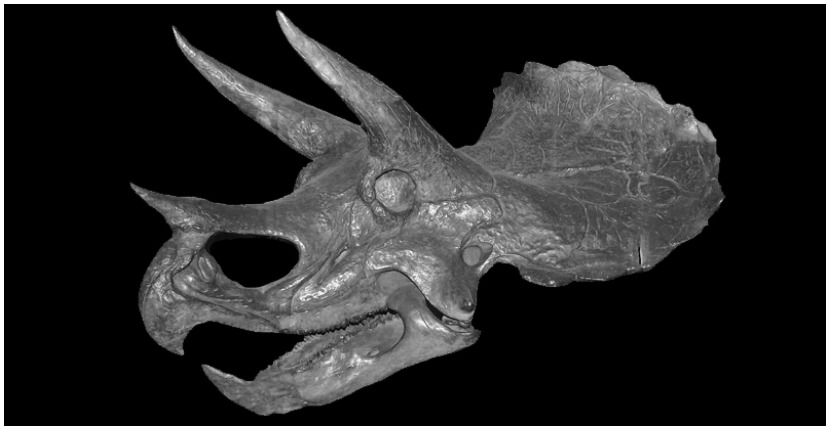A massive Triceratops skull has been unearthed and it couldn’t have happened to a more deserving person. Harrison Duran has been obsessed with dinosaurs since childhood. An ecology and evolutionary biology student at the University of California, Merced and team member of Fossil Excavators his ultimate dream has come true with this remarkable 65 milion-year-old find.
The discovery occurred during a paleontology dig in North Dakota’s Badlands. “I can’t quite express my excitement in that moment when we uncovered the skull,” Duran said in a university news release. “I’ve been obsessed with dinosaurs since I was a kid, so it was a pretty big deal.”
The skull has been nicknamed Alice the Triceratops by the team at Fossil Excavators, referencing the owner of the land the skull was found on. “Alice” was found among fossils of ancient plants from the Cretaceous period.
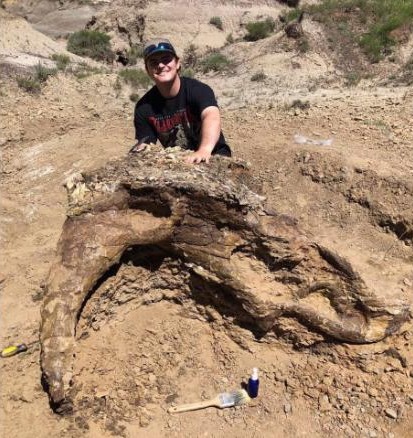
“It is wonderful that we found fossilized wood and tree leaves right around, and even under, the skull,” Duran said. “It gives us a more complete picture of the environment at the time.”
He was on a 2-week dig with the president of Fossil Excavators Dr. Michael E. Kjelland, an experienced excavator who also serves as a biology professor at Mayville State University in North Dakota.
It took a week to fully excavate the fragile skull of Alice before being carefully transported to Kjelland’s lab. “It was very slow given the fragile state of the mineralized bone and there were many pieces of the skull that had to be glued together, sorted, and collected,” Kjelland said. “One wants to uncover it as fast as possible out of curiosity as to how much is there, but at the same time, one has to work frustratingly slow to keep it from crumbling.”
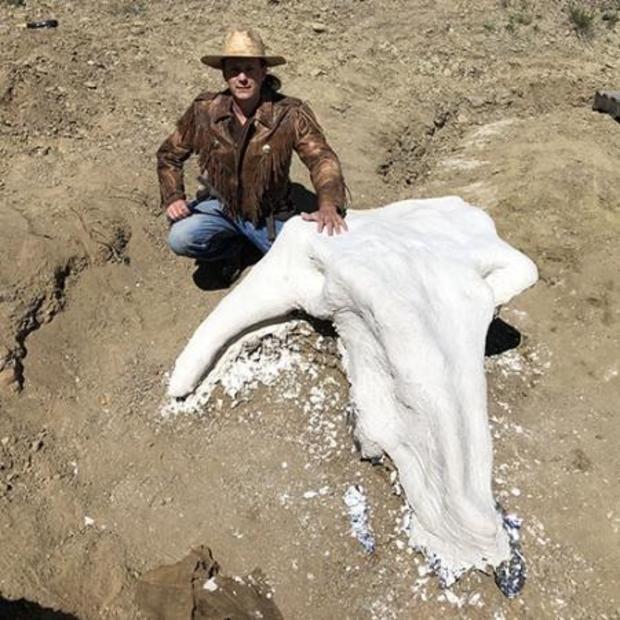
As of now the exact location of the skull is remaining out of the public eye but the ultimate goal for Kjelland and Fossil Excavators is to fully display Alice once it is safe to do so. “My vision is to have Alice rotate locations,” Kjelland said. “The goal is to use this find as an educational opportunity, not just reserve Alice in a private collection somewhere so only a handful of people can see her.”
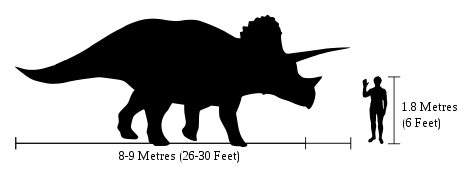
Triceratops was a herbivore dinosaur that first appeared during the late Cretaceous period, about 68 million years ago. It lived in what is now North America. It was one of the last known non-avian dinosaurs which roamed the Earth for 2 million years, becoming extinct in the Cretaceous–Paleogene extinction event 66 million years ago. The name Triceratops, which literally means “three-horned face”, comes from the Ancient Greek words (tri-) meaning “three”, (kéras) meaning “horn”, and (ōps) meaning “face”.
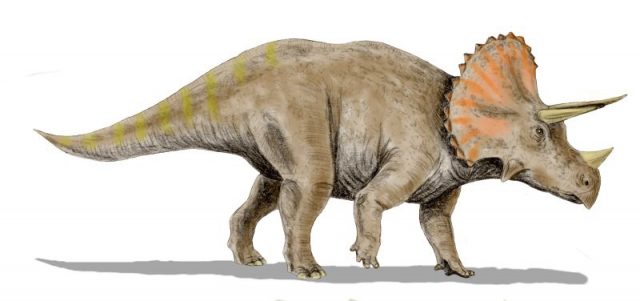
Triceratops was first “discovered” and documented in 1889 by Othniel Charles Marsh. It is one of the most popular and recognizable dinosaurs, featured in many films, postal stamps, and other types of media. It’s iconic head bears a large bony frill with three horns attached to the skull. Its massive four-legged body and shape has many similarities with the modern rhinoceros.
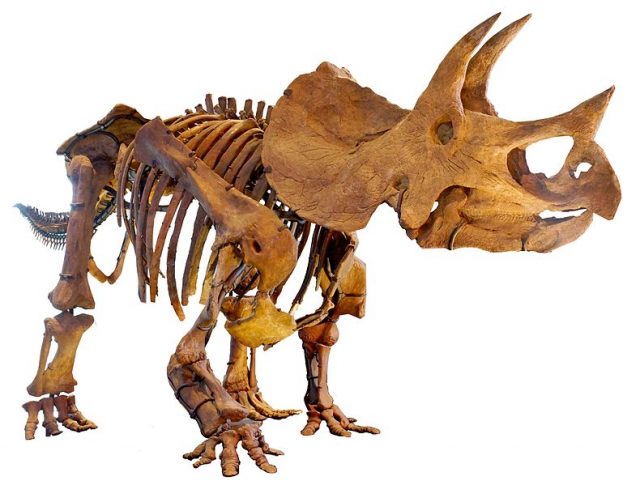
It was one of the largest dinosaurs of its time, measuring up to 30 feet long (9m) and weighing up to twelve tons. It shared the landscape with the ferocious Tyrannosaurus Rex and is thought to have been one of its favorite meals. It is frequently portrayed doing battle with the T-Rex, however it is not certain that the two giants fought in the manner often shown in museum displays and popular culture.
Related Article: World’s Largest T. Rex Skeleton Discovered – Nicknamed “Scotty”
The function of the Triceratops’ frills and three distinctive horns on its head have long been the subject of lively debate. The traditional view is that they were defensive weapons against predators. More recent interpretations have found it likely that these unique features were also probably used for species identification, courtship and dominance display, much like the function of antlers and horns of modern animals.
